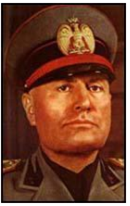 Long Answer Type
Long Answer TypeWith reference to the Union Legislature, answer the following questions:
(a) How is the Speaker of the Lok Sabha elected? State any two Disciplinary Functions of the Speaker.
(b) Explain any two conditions under which a member of Parliament can be disqualified under the Anti Defection Law.
(c) Give reasons to justify why the Lok Sabha is considered to be more powerful than the Rajya Sabha.
The President of India is the Constitutional Head of the Indian Republic. In this context, answer the following questions:
(a) How is the President elected?
(b) Mention three types of Emergencies that the President is empowered to proclaim.
(c) Explain briefly any four ‘Executive Powers’ of the President.
The Supreme Court has extensive jurisdiction. In the light of this statement, answer the following questions:
(a) What are the qualifications of the Judges of the Supreme Court?
(b) (i) Explain the composition of Supreme Court.
(ii) How are the judges of the Supreme Court appointed?
(c) Explain the cases in which the Supreme Court enjoys Original Jurisdiction.
Explain the causes of the Great Revolt of 1857 with reference to the following:
(a) Any three political causes.
(b) Any three military causes.
(c) Any four economic causes.
Through various national movements, Gandhiji mobilised public support to win freedom for India. In this context, state the following:
(a) Any three causes for Gandhiji to launch the Non-Cooperation Movement.
(b) The name given to the uprising of 1942. Two reasons for launching this mass uprising.
(c) The impact of the Non-Cooperation Movement in India’s freedom struggle.
The partition of Bengal and the formation of the Muslim League were two important events that had an impact on the national struggle for independence. In this context, explain the following:
(a) Impact of the Swadeshi and Boycott movements as part of the Anti-Partition Movement.
(b) Any three factors relating to the formation of the Muslim League.
(c) Objective of the Muslim League.
(a)The Boycott and Swadeshi movements had a significant impact on the Anti-Partition Movement in the following ways:
i. Mass Character of the Movement: The Swadeshi Movement attracted a large number of people belonging to varied sections of Indian society. This was the first time that so many people had participated in a mass movement. The participation of women and students was an essential factor which increased the importance of the movement manifold.
ii. Economic Nationalism: The Swadeshi and Boycott movements were insistent on economic self-reliance, which meant an assertion of self-confidence. It aimed at thepromotion of indigenous industries for strengthening the country. This explicit influence on self-reliance gave a much needed stimulus to the cottage industries and to large-scale enterprises. Many textile mills, soap and match factories, and handloom weaving concerns were founded.
iii. Cultural Impact: As a result of the Swadeshi and Boycott movements, there was a spurt of nationalist poetry, prose and journalism. Many famous patriotic songs were written by nationalist poets like Rabindranath Tagore, Rajani Kant Sen, Syed Abu Mohammed and Mukunda Das. Many classic articles on freedom, liberty and self reliance were produced in the press. Bankimchandra’s novel Anandmath though written earlier, was much in demand because of the song ‘Bande Mataram’. It was seen as a war cry of the nationalists.
(b)The following three factors were responsible for the formation of the Muslim League:
i. Loss of Sovereignty by Mughal Rulers: The British established their absolute rule over the Indian peninsula when they dethroned the Mughal rulers. Because the Mughal throne had a symbolic importance and emotional value for the common Muslims in India, it was seen as an attack on the Muslim identity itself.
ii. British Policy of Divide and Rule: To maintain their hold over India, the British government began to follow their infamous policy of ‘Divide and Rule’. In 1871, the government adopted a resolution which made Urdu the medium of instruction for Muslims in primary and secondary schools and increased the government aid to Muslim education institutions. Muslim rulers were portrayed as plunderers and Hindu rulers as cruel to their Muslim subjects.
iii. Relative Backwardness of Muslim Community: The communal and separatist trend of thinking grew among the Muslims because of their then relative backwardness in education, trade and industry. Because of the hostility of upper class Muslim zamindars and aristocrats towards the British, Muslims largely remained aloof from modern western education.
(c) Aims and objectives of the Muslim League:
i. To promote among the Indian Muslims, support for the British government and to remove any misconceptions regarding the intention of the government in relation to Indian Muslims.
ii. To protect and further the political interests and rights of the Muslim community and to represent their needs and aspirations to the government in mild and moderate language.
iii. To prevent the rise of hostile feelings between the Muslim community and other communities in India.

(a) Identify the leader in the picture. Give two examples to state that the leader followed an expansionist policy.
(b) State three factors that led to the rise of Fascism.
(c) State four similarities between the ideologies of Nazism and Fascism.
With reference to the United Nations and its related agencies, answer the following questions:
(a) Explain any three functions of the WHO.
(b) State the composition of the International Court of Justice.
(c) State any four functions of the General Assembly.
